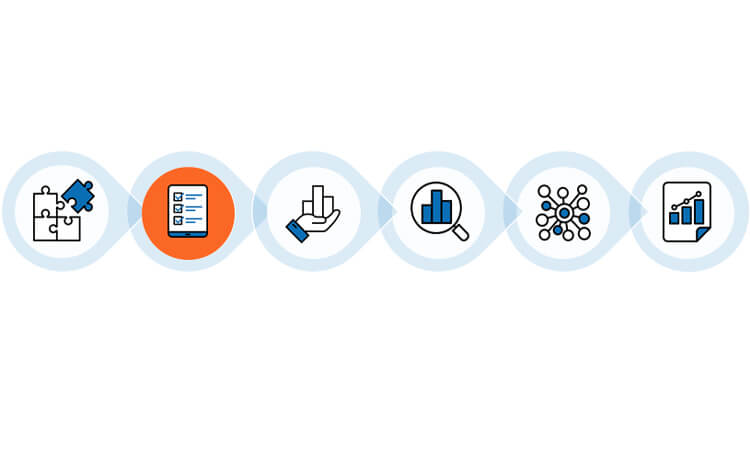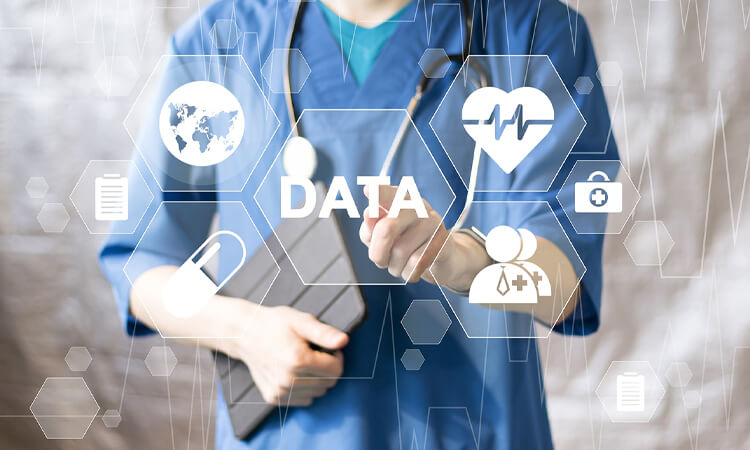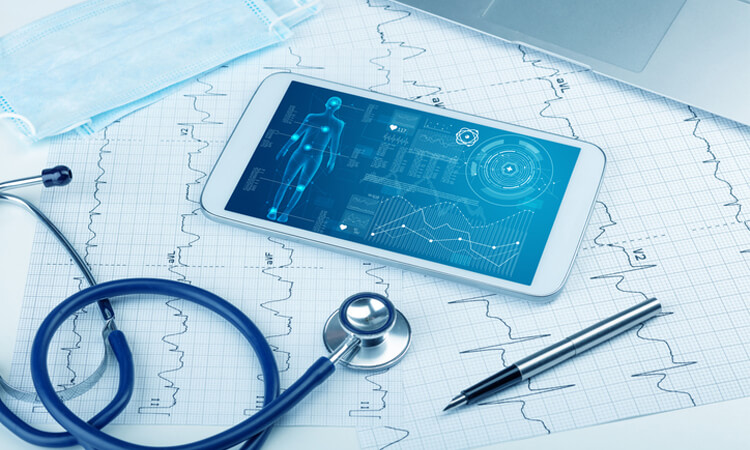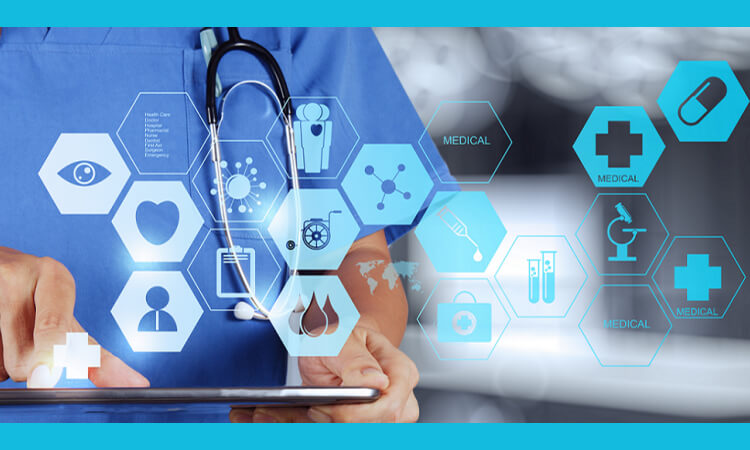Data capture and analysis are now essential tools for improving healthcare outcomes. Technology and data availability has made it possible to collect, store, and analyze large amounts of healthcare information. This wealth of data offers valuable insights into patient health, treatment efficacy, and disease progression. These insights can help healthcare providers make informed decisions and personalize treatment plans. Additionally, they can intervene promptly when necessary.
Basics of Data Capture and Analysis
Data capture refers to the process of collecting and recording data. This is done from various sources within the healthcare system. This data can include patient demographics, medical histories, clinical observations, and more. It can be collected through electronic health records (EHRs), medical devices, and wearable sensors. Additionally, patient surveys and other data collection tools can be used.
Laboratory test results and imaging scans are also important sources of data. They provide valuable insights into a patient’s health status and can help inform treatment decisions. Medication records are another critical source of data. They detail the medications a patient is taking and can help prevent adverse drug interactions.
Once the data is captured, it is subjected to analysis. Data analysis involves examining and interpreting the captured data to derive meaningful insights and patterns. The goal of data analysis is to extract valuable information. This information can guide decision-making, improve patient care, and enhance overall healthcare outcomes.
Data analysis can be performed using various techniques. These techniques include statistical analysis, machine learning, and data mining. These techniques help identify trends, patterns, and relationships within the data. They can also help predict future outcomes. This includes identifying areas that require additional research or intervention.
Methods of Data Capture
Data capture has been utilized across industries for decades. It employs different methods based on business requirements. Technology is crucial in capturing data from various sources, such as written forms, emails, and PDF files.

Let’s explore the different methods used for data capture today:
- Method 1: Optical Character Recognition (OCR)
- OCR technology converts printed or handwritten text into machine-readable data. It scans documents or images, extracting text and converting it into digital formats for editing and searching. OCR is ideal for digitizing printed documents accurately.
- Method 2: Intelligent Document Recognition (IDR)
- IDR combines OCR with advanced machine learning algorithms. This is done to extract data from structured and unstructured documents. This method analyzes layouts, fields, and patterns to capture relevant data effectively. IDR handles complex documents with different formats and layouts.
- Method 3: Web Data Capture
- Web data capture is crucial in the digital era. It involves extracting data from websites and online sources using web scraping tools and techniques. This method enables businesses to collect real-time information. It is used for market research, competitor analysis, and other data-driven strategies.
- Method 4: Mobile Data Capture
- Mobile devices have become integral for data capture. Mobile apps allow users to collect data directly on smartphones and tablets, such as customer feedback, surveys, or field data. The captured data can be securely transmitted for further analysis.
- Method 5: Sensor Data Capture
- In domains like healthcare and IoT, sensor data capture is essential. Sensors in devices collect real-time data on various parameters like temperature or heart rate. This data enables monitoring, diagnostics, and decision-making. It is used in applications ranging from patient care to industrial automation.
- Method 6: Machine-to-Machine (M2M) Data Capture
- M2M communication involves devices exchanging data without human intervention. Devices capture and send data for analysis and decision-making in manufacturing, logistics, and utilities. M2M data capture optimizes operations and enables efficient monitoring and control.
- Method 7: Barcoding and RFID
- Barcodes and RFID tags capture data in retail and logistics industries. Barcodes are scanned using barcode readers, while RFID tags use radio waves to capture and send data. These methods enable efficient tracking and inventory management.
- Method 8: Voice Recognition
- Voice recognition technology converts spoken language into written text. Capturing spoken data eliminates the need for manual transcription. Voice recognition is particularly useful in applications like voice assistants and transcription services. It is also useful in voice-controlled systems.
- Method 9: Video and Image Analysis
- Video and image analysis techniques capture data from visual content. Computer vision algorithms can extract information from images and videos. This enables object recognition, facial recognition, and video surveillance applications.
- Method 10: Social Media Data Capture
- Social media platforms generate a vast amount of user-generated content that holds valuable insights. Data capture methods are employed to collect and analyze social media data. These include posts, comments, and user profiles. This data helps businesses understand customer sentiment, preferences, and trends.
- Method 11: Wearable Devices
- With the rise of wearable technology, data capture has extended to devices like fitness trackers, smartwatches, and medical wearables. These devices capture biometric data, activity levels, and other health-related information. This provides valuable insights for personal health monitoring and research purposes.
- Method 12: Internet of Things (IoT) Data Capture
- IoT devices interconnected through the internet capture and exchange data. Sensors in devices collect data on environmental conditions, energy usage, and more. This data is captured and transmitted for analysis and decision-making. This enables smart homes, industrial automation, and predictive maintenance applications.
What is Data Capture in Healthcare?
Let’s consider a healthcare scenario where data capture is essential for improving patient outcomes. Imagine a hospital implementing an electronic health record (EHR) system. The EHR system allows healthcare providers to capture and store patient data electronically. It replaces traditional paper-based records.
The healthcare provider uses the EHR system to capture various data points during a patient’s visit. They enter the patient’s demographic information, medical history, current symptoms, and medications. This ensures accurate and secure documentation.
In addition to manual data entry, the EHR system may help with automatic data capture. For example, it can integrate with medical devices like blood pressure monitors or glucose meters. When vital signs are measured using these devices, the data is automatically captured and recorded in the EHR system, reducing errors.
Furthermore, the EHR system enables data capture from external sources. For instance, previous laboratory tests or diagnostic imaging results can be electronically captured. They can then be integrated into the EHR. This ensures all relevant information is readily available to healthcare providers.
Once the data is captured within the EHR system, it becomes a valuable resource for analysis. Healthcare providers can use data analysis tools to identify patterns, trends, and correlations. This information informs diagnosis, treatment decisions, and care planning.
For example, analyzing a large pool of patient data helps researchers identify factors. These factors contribute to better outcomes for specific conditions. They can study treatment effectiveness and develop evidence-based guidelines for improved patient care.
In summary, data capture in healthcare involves capturing patient information electronically, both manually and automatically. Integration with medical devices and external data sources enhances data accuracy and availability. Analysis of captured data informs decision-making and contributes to advancements in medical research.
Data Capture Tools in Healthcare
Various data capture tools in healthcare collect and manage patient information. These tools streamline processes, improve data accuracy, and enhance patient care. Here are some common data capture tools in healthcare:

- Electronic Health Record (EHR) Systems. EHR systems store patient health information electronically. They capture data like medical histories, diagnoses, treatments, medications, and test results. EHR systems enhance data accessibility and facilitate communication among healthcare providers.
- Clinical Data Capture Forms. These forms gather specific information during patient encounters. They capture data like demographics, vital signs, symptoms, assessments, and treatment plans. Clinical data capture forms standardize data collection and streamline documentation.
- Mobile Data Capture Apps. Mobile apps enable data capture on smartphones and tablets. They are useful for recording observations, conducting surveys, and documenting procedures. They can also capture images for documentation.
- Wearable Devices. Fitness trackers or medical wearables capture patient data continuously or intermittently. They track health parameters like heart rate, sleep patterns, and activity levels. They can also track medical conditions.
- Barcode and RFID Scanners. Scanners capture data from patient wristbands, medication labels, and medical equipment. They ensure the accurate identification of patients, medications, and devices. This reduces errors and improves patient safety.
- Optical Character Recognition (OCR) Technology. OCR technology converts printed or handwritten documents into digital formats. It automates data entry, reducing manual effort and improving accuracy.
- Data Integration and Interoperability Solutions. These tools integrate data from various sources like medical devices, laboratory systems, and databases. They provide a comprehensive view of patient information and facilitate data sharing.
These data capture tools improve data collection, management, and analysis in healthcare. They enhance accuracy, facilitate communication, and support evidence-based decision-making for better patient outcomes.
The Importance of Data Capture in Healthcare
Data analysis is crucial in healthcare. It transforms raw data into actionable insights that drive improvements in patient care. Let’s explore why data analysis is so significant:

Comprehensive Patient Profiles
Data capture allows healthcare providers to create comprehensive patient profiles. This includes medical histories, test results, medication records, and demographic details. These profiles provide a holistic view of the patient’s health status.
Uncovering Patterns
Data analysis helps identify patterns within datasets. It uses statistical techniques and advanced analytics to extract valuable insights. Healthcare professionals can understand disease patterns, treatment outcomes, and patient demographics.
Efficient Care Coordination
Data capture facilitates seamless information sharing among healthcare teams. This enables better care coordination and collaboration. When different healthcare providers have access to a patient’s captured data, they can work together more effectively.
Early Detection and Prevention
Data analysis enables continuous monitoring of patient health. By analyzing real-time or historical data, healthcare professionals can spot subtle changes, deviations from normal trends, and early warning signs. This allows timely interventions and proactive measures to prevent complications.
Research and Evidence-based Medicine
Data analysis supports medical research and evidence-based medicine. Researchers use it to study treatment efficacy and intervention impact and develop guidelines. This promotes the advancement of medical knowledge and improves patient care practices.
Quality Improvement
Data analysis helps assess and enhance the quality of care. It analyzes performance indicators, patient outcomes, and adherence to guidelines. This data-driven approach identifies areas for improvement and promotes evidence-based practices. It also enhances healthcare delivery.
Population Health Management
Data analysis aids in managing population health. Aggregated data reveals trends, risk factors, and disparities among specific populations. This information enables targeted interventions, preventive strategies, and public health initiatives. It contributes to overall community well-being.
Regulatory Compliance and Documentation
Accurate and comprehensive data capture is essential for meeting regulatory requirements. It is also essential for ensuring compliance with healthcare standards. It enables healthcare organizations to maintain proper documentation and demonstrate adherence to guidelines. This facilitates audits or investigations when necessary.
In conclusion, data capture and analysis play a pivotal role in healthcare. By effectively capturing and analyzing data, healthcare providers can enhance patient outcomes and improve decision-making. They can also drive advancements in medical research. Embracing the power of data is key to delivering high-quality, patient-centered care.
Related Articles: What is the Telemetry Unit in a Hospital?
About Data Capture FAQs
-
FAQ 1: What is data capture in healthcare?
Data capture in healthcare involves collecting patient information for record-keeping and analysis.
-
FAQ 2: Why is data capture important in healthcare?
Data capture is important in healthcare for accurate and comprehensive patient documentation.
-
FAQ 3: What are some methods of data capture in healthcare?
Methods of data capture in healthcare include manual entry and electronic forms. They can also integrate with medical devices.
-
FAQ 4: How does data capture improve patient outcomes?
Data capture improves patient outcomes by providing healthcare providers with valuable information. This helps with informed decision-making.
-
FAQ 5: What tools are used for data capture in healthcare?
Tools used for data capture in healthcare include electronic health record (EHR) systems, mobile apps, and barcode scanners.
-
FAQ 6: How is data captured from medical devices?
Data from medical devices is captured automatically. It is then integrated into patient records for analysis.
-
FAQ 7: What is the role of electronic health record (EHR) systems in data capture?
Data analysis in healthcare offers benefits such as identifying patterns, trends, and correlations. These can lead to improved patient care.
-
FAQ 8: How does data capture support evidence-based decision-making?
Data capture supports evidence-based decision-making by providing reliable information for treatment planning.
-
FAQ 9: What are the benefits of data analysis in healthcare?
Data analysis in healthcare offers benefits such as identifying patterns, trends, and correlations. This can lead to improved patient care.
-
FAQ 10: How can data capture and analysis contribute to medical research advancements?
Data capture and analysis contribute to medical research advancements. This is done by providing insights for studies and clinical trials.








